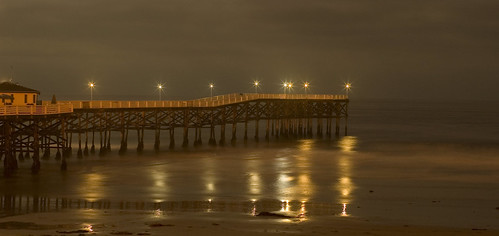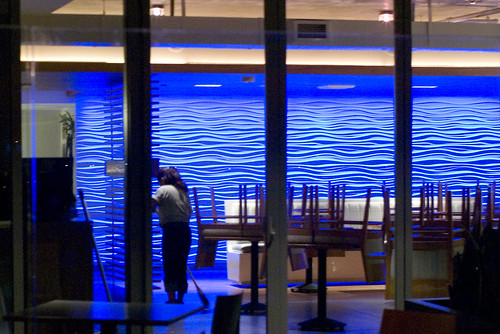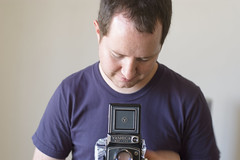Last night I took my camera with me on a late-night food run. On the way back, I stopped at the end of Felspar street and took some shots of the beach scene. My favorite two are already up at Flickr, but I thought I'd expand on them a bit here.
This is the end of Crystal Pier, which houses a hotel (you can see the last of the cabins on the left). I took a bunch of these shots, playing with the sensitivity and exposure. This was the longest - at ISO 200 and f/4.0, exposed for about 10 seconds.
Even with an f/1.4 lens, it was super dark and I had to focus manually. I set the camera on a post and used a 2-second delayed shutter to keep it still and out of my shaky hands.

For comparison, here's a version taken at ISO 1600 :

Even reduced in size, you can really notice the noise.
Here's a shot of a cleaning lady working at JRDN, the swank bar in the new Tower 23 hotel. Tower 23 doesn't really fit in in PB - it's way too self-conscious and preening of a place to feel natural in such a laid-back, seedy beach neighborhood. It seemed appropriate that on a Sunday night when the more relaxed established places like the PB Bar & Grill and Longboards were really hopping, JRDN was closed - looking its ghostly best.
I should have remembered that I'd set the 2-second delay before I took this shot - I had the woman framed well, hit the shutter and wondered what was going on. Luckily, she stayed in the door frame, but I could swear it was a better shot just two seconds before.

Here's another missed shot opportunity, as she ducks behind the bar just as I find the right exposure and focus. I think the color in the other one makes it better, but the angle of the bar on this one has some promise. Shot through a couple of layers of glass, and manual focus - I'm sure it could be sharper if I'd kept trying.







